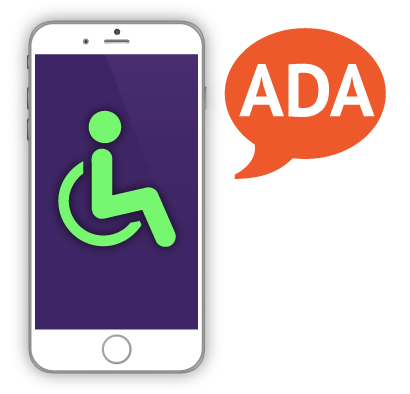American with Disabilities Act (ADA) was implemented so all people have access to your business without restrictions. In 2018, a revised set of ADA guidelines addressed new technologies and websites. With 1 in 5 Americans disabled and many using some kind of special device, your website should be designed for compatibility and to make their visit enjoyable.
Beyoncé was in the news recently because she is facing a lawsuit from a visually impaired fan after they could not access some of the features on her website, including pictures. Blue Apron was also issued a complaint about accessibility issues. Even small companies can face a fine of $55,000 if your website isn’t ADA compliant. All people should be able to navigate your content and engage with everything.
The Web Content Accessibility Guidelines (WCAG) are the most universally accepted standards and are used by courts and followed by large businesses and government agencies.

Here are our top seven points website owners need to know:
- All text must be readable by a screen reader. Text should be able to be resized up to 200 percent and flow to fit on digital screens of all sizes.
- Provide text for images and videos. You must include text attributes for all of your images so they will convert to braille, print, speech and symbols. This is the most common complaint and an easy fix. Just make sure alt tags are added to every image and you’re good. You could also have a text-only website option. The second most common complaint is not having closed captioning. All videos on your website must have closed captioning which you can set up in YouTube.
- Allow media to be turned off. Any audio or visual media that plays automatically for over 3 seconds, should have a mechanism to turn it off without users muting their computer sound.
- Seizure-causing content is prohibited. Flashing lights or content with lots of flashing imagery can trigger people with seizure disorders. Content should flash for no more than 3 times per second. Place a warning on content that has potential triggers. There should also be a button to turn off or pause animations, pop-ups, scrolling and blinking.
- Be consistent with navigation tools. Websites should be perceivable and predictable with the same navigation tools throughout.
- Help users with explanations and instructions. Whenever your website requires input from users, such as a contact form, you must provide detailed instructions to help someone complete the steps necessary. If someone makes an error, the message that comes up should tell the users in text and audio form what they need to change. For example, you can’t just have the “error” sign come up if someone types their password wrong. Saying “your username or password is incorrect” is acceptable.
- Your website must be completely accessible by keyboard. Many people rely on the keyboard because they cannot operate a mouse.
Users should be able to use the keyboard to:
- Click on a link or button
- Select radio buttons or items in a drop-down menu
- Navigate the page
- Autocomplete text
- Close a dialog box
- Adjust a slider user interface (UI) element up or down
- Scroll the navigation/menu items/the page
We don’t like being alarmists, but we should let you know that in 2018 and so far in 2019, more lawsuits were filed about this than ever before. If you want to know how your website stacks up to the current ADA standards, let us take a look and fix the issues. Contact us today!

